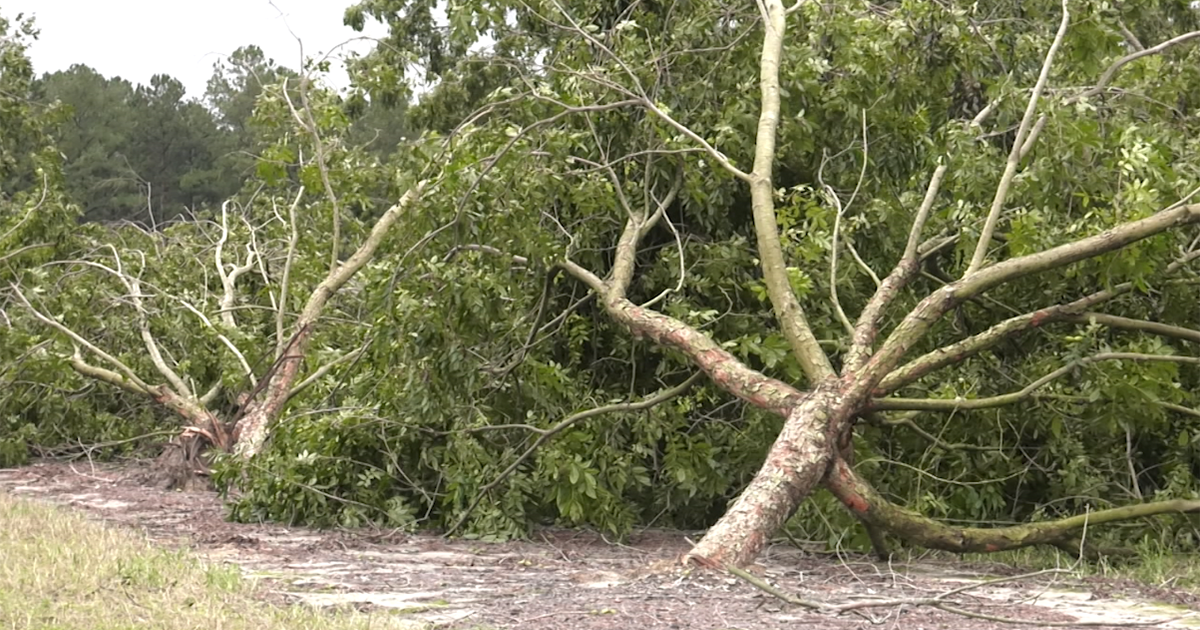Hahira, GA
With wind speeds topping fifty miles an hour, Hurricane Idalia carved a path of destruction through South Georgia, wreaking havoc on a number of farming operations along the way. While it is sure to be significant, the final loss is still being calculated.
“Our extension service is out trying to meet with farmers and see what the extent is. I mean, half of the state’s corn crop isn’t in yet. It’s tough, especially in Lowndes, Brooks, Clinch, and Echols County area. Cook County took it on the chin as well,” says Russ Goodman, Chairman of the Senate Ag Committee.
With agriculture being so diverse in the area, everything from cotton to pecans were affected. In fact, over at Shiloh Pecan Farms, the losses include around 10,000 trees and a significant portion of this year’s crop.
“Probably half of the crop is on the ground. It’s thrashed off. None of it is mature enough. So, that’s a direct loss. It, it feels as though it’s fifty percent and especially if you add to clusters of nuts that are in the trees that are twisted, damaged that haven’t even hit the ground but from past experience, you’re going to have some of that too. So, I feel pretty certain that half the crop is laid to waste,” says Buck Paulk of Shiloh Pecan Farms.
However, farmers will have little time to mourn, as they must try and salvage what they can with harvest season right around the corner.
“Right now we’re going through and sawing them off at the trunk where they’re laid over. If it’s leaning more than thirty degrees, those trees from past experience, they’re not viable to try to post up. So, that’s the first criteria. We saw that off and then we skitter them out. I have to get it out of the orchard to be able to get back in and continue our normal work of preparing for harvest, which is mowing, herbiciding, ground control that we need to be ready to for nuts to start falling on some varieties as early as three weeks from now,” says Paulk.
With all the crop loss and structural devastation, these communities are in need of government assistance to help them rebuild. And while it won’t happen overnight, the process of getting them help is in already in progress.
“When the governor issues the declaration, he’s going to work in conjunction with our partners in Washington and that’s going to free up some emergency loans and that kind of thing. But that’s also going to begin the process of trying to get some disaster funds appropriated to these farmers. I do know that our two US senators have already reached out to the administration in Washington trying to shepherd all the resources. So, this is really just a all hands on deck kind of moment,” says Goodman.
Even though there is plenty of frustration and disappointment following the storm, the only thing for farmers to do now is try and keep moving forward.
“We’re going to plan on the faith that the good Lord is going to let the sun shine. That we’re going to get rain and that God is going to bless our efforts because the American people are depending on us to fed them. You know, we just have to pick up the pieces. Farmers are some of the most resilient people there are earth and farmers have to be optimists. Otherwise, they wouldn’t do what they do but it is tough and these things take years to overcome,” says Goodman.

